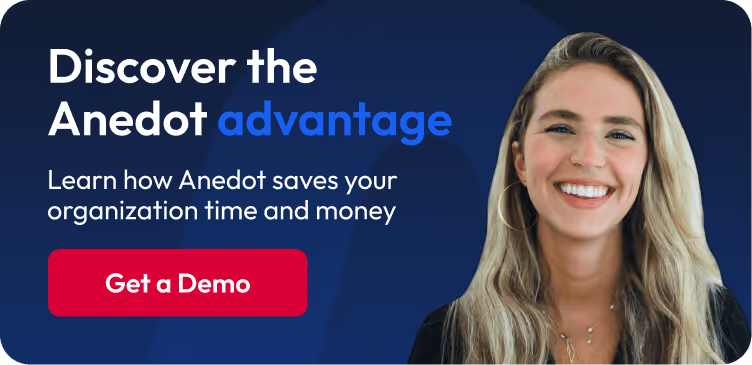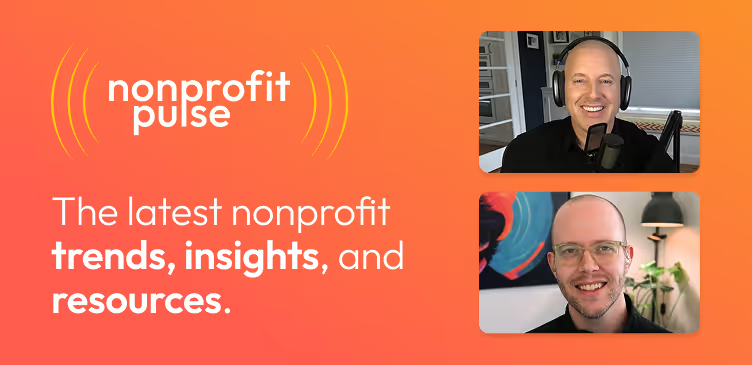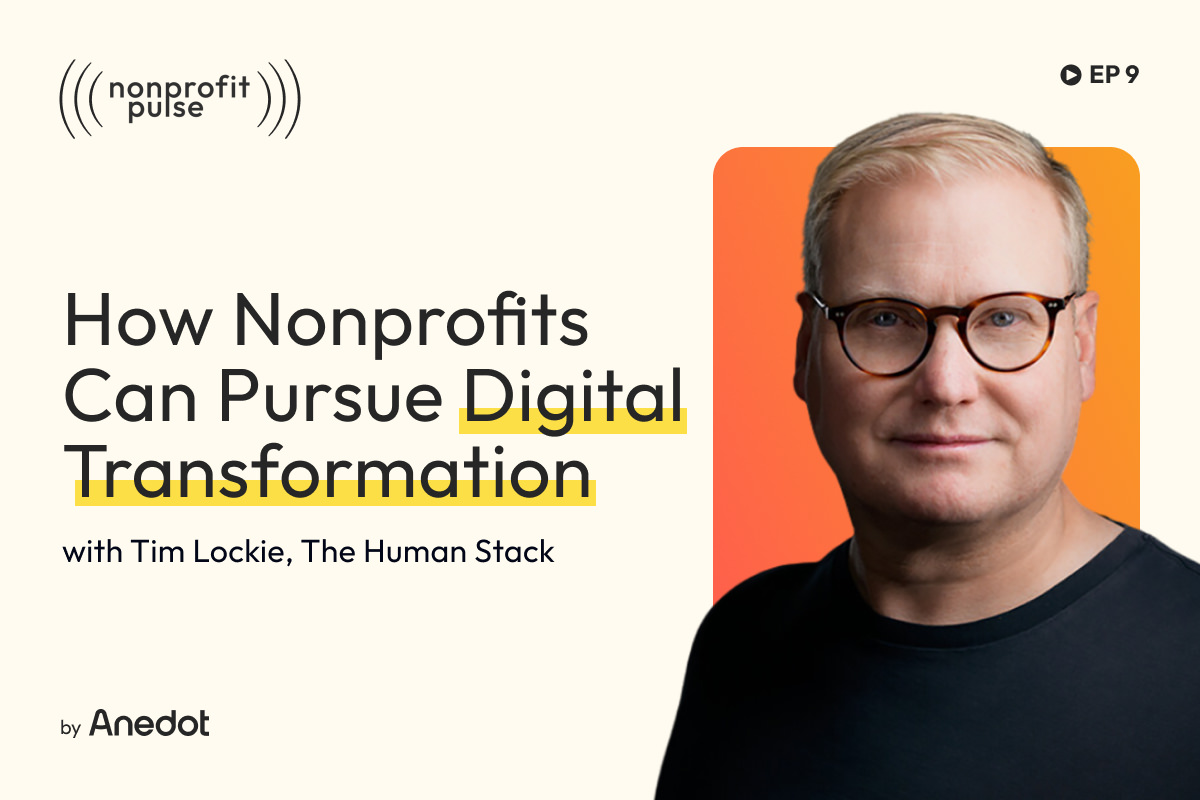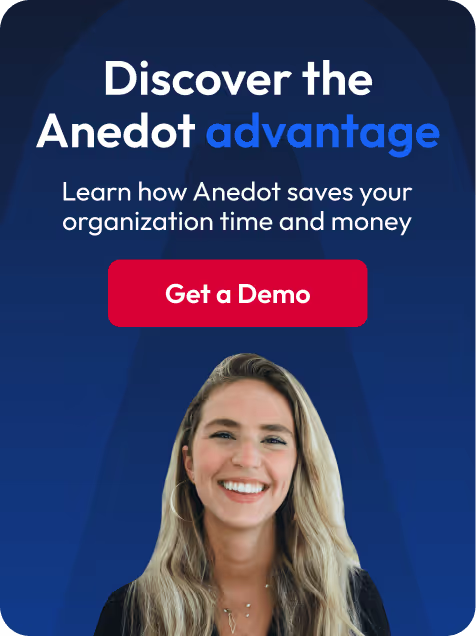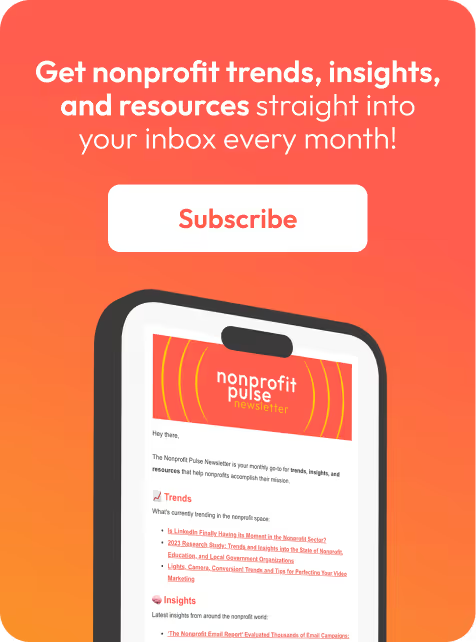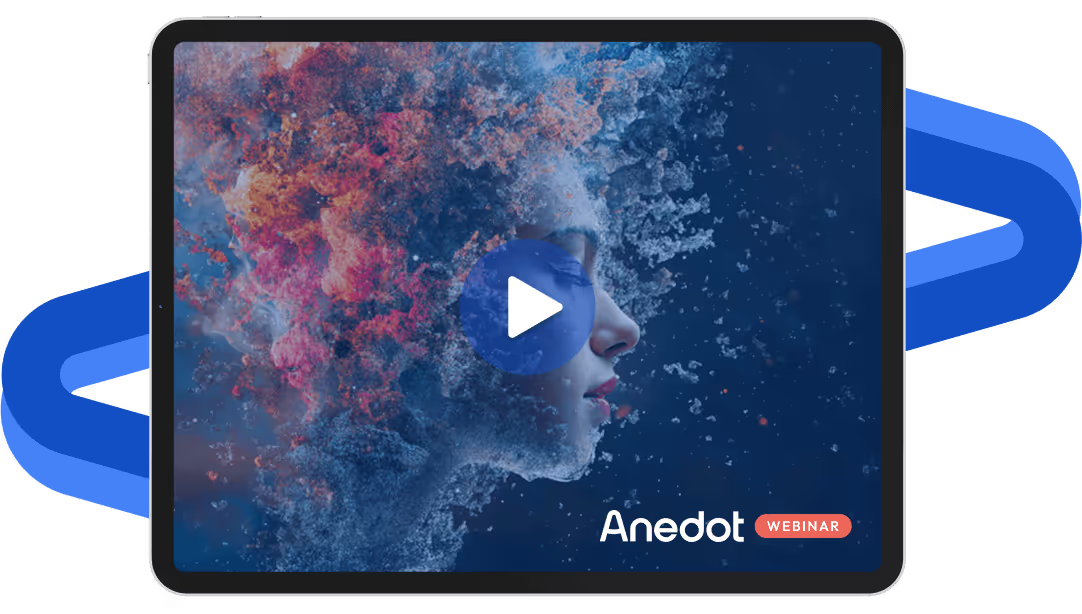Podcast episode transcript ↓
Josh:
Technology is advancing incredibly fast.
Digital transformation in the for-profit sector is one of the fastest growing industries.
So how can nonprofits keep up and pursue digital transformation and maturity in their organizations?
I'm Josh with Anedot and welcome to Nonprofit Pulse, where we explore trends, insights, and resources that help nonprofits accomplish their mission.
On this episode, we're joined by Tim Lockie on the topic of digital transformation, how nonprofits can begin to pursue a digital transformation strategy.
Tim has worked inside and outside of nonprofits for more than 20 years, bringing expertise in technology, digital maturity, and transformation.
He's the founder and CEO of The Human Stack, helping nonprofits overcome tech challenges and deficiencies on both the tech and human side.
Hey, Tim, thanks for coming on Nonprofit Pulse.
Tim:
Thanks. It's so great to be here.
What is nonprofit digital transformation and why should organizations pursue their own digital transformation strategy?

Josh:
So today we're going to be talking about nonprofit digital transformation, what it means, what's to gain? What should nonprofits look out for as they implement a digital transformation strategy?
And, you know, digital transformation is not new to the business sector.
For the past, I don't know, probably decade or so, there's been talks and education and strategies put together.
But as you know, in nonprofit land, typically, technologically speaking, digitally speaking, nonprofits are laggards when it comes to nonprofit innovation and transformation.
And so I'm just super excited to talk to you today about digital transformation and what nonprofits can do to pursue it.
So maybe just starting off defining terms, what is digital transformation and why do nonprofits need to pursue their own digital transformation strategy?
Tim:
Last year, in March, I was working on these ideas and I'd been and I can tell you a little bit about my story at some point, but working through that exact question, not just at a base level, but what's the model for it?
And what I found is that there aren't concise models for it. And then I hit on this really simple way of thinking about it that has worked for me ever since.
And so think of digital transformation like the car industry.
So and I say this to my mom sometimes, like mom, imagine that Salesforce, Microsoft, all these big companies and these big platforms are like a car manufacturer and so people go and they order their car and they get it all set up and then they go to drive their car and they wreck it or they don't know how to drive it, so they don't drive it.
This is the issue that happens over and over and over in not just nonprofits, for-profits as well, where there's the acquisition of technology without the accompanying use of technology.
And the reason for that is that the whole professional services layer of what we do never figured out how to create driver's ed for businesses. That's especially true for nonprofits.
And so what happens all the time is that a nonprofit says we don't have, you know, we're not doing what we should be doing on digital tools or technology.
What do we do? So they go and they buy something and it doesn't work.
And they've done this whole big process. It took 18 months, six figures of work, and then at that moment they are faced with this decision of what do we do next?
And unfortunately, most of the time they just go around the mulberry bush again and they find a new technology, spend another 18 months and six figures.
And at the end of that, they don't, like it doesn't work. They fire their CIO or their CIO finds a different mission, right? That's what lack of digital transformation is.
What digital transformation is then is being able to have good technology and to have good drivers.
It boils down to that. Technology that you can use well, and humans that know how to use it well.
It's just the combination of those two things.
I call the car side of that, the tech stack and the driver side of that, the human stack, because we don't have a place to measure digital maturity.
How can organizations benefit from nonprofit digital transformation?

Josh:
Yeah. So talk to us about what nonprofits have to gain by pursuing a digital transformation strategy.
What is to gain and really what are those gains, you know, short term, mid-term, long term?
Tim:
Need to put this into two buckets.
One bucket is what's going to work to sell this to the board and to funders and the executive director and all of that and if you think about, you know, an iceberg, all of the logic reasons that I'm going to tell you, those are, you know, above the waterline, the ones that we're aware of and the ones that we see.
Okay. So at that level, there's increased deficiency. There is better access to information about what you're doing.
And even more importantly, there's a statistic I saw a couple of years ago, and this really changed my life that said 90% of organizations collect data, but only 5% use that data to make decisions.
Digital transformation is the work that it takes in order to convert the data that's being collected into actionable decisions.
And that goes through a process of data.
First, being trusted because a lot of the reason that people don't make decisions based on that data is that they know better than to trust it, right?
So first you start with data that you trust and you convert that to information.
Information is just data with context and meaning, right? And then you stack that information a couple of layers deep.
You convert that to insight.
Executives use insight, directors use information, and staff usually are the ones that are creating the data.
So you end up with a full spectrum of meaning from data all the way to insight, and you have alignment on roles so people know what they're doing with that. That creates an enormous amount of efficiency.
So it becomes the leverage the technology's always meant to be, which is you can do more things with fewer staff and less time.
That's the that's above the iceberg, right or above the waterline on the iceberg.
Does that make sense so far? Any questions on that?
What are the results of pursuing digital transformation?

Josh:
Yeah, absolutely. So gaining of efficiency, gaining of understanding, actionable insights, you know, data that really informs and can bring your organization to a more informed next step in whatever it is.
Whether it's driving nonprofit fundraising, whether it's driving volunteer recruitment, whether it's just driving brand and brand reach, having that digital understanding of what's going on in your organization, what's going on when in your space is just is huge and massive and it's difficult.
It's not easy. So what are you seeing with organizations that are pursuing or have pursued a digital transformation strategy?
What have you seen some results, you know, mid-term, long-term after implementing it?
Tim:
Yeah. I mean, this is what this is what they find that's under the waterline on that.
So, yes, it does help raise more money.
Yes, it does help create and generate more sustainers in marketing.
Yes, it creates more efficiency on the forecasting and financial side, you know, volunteer management, every department is going to be affected by this, by the efficiency in their own way, just like you're pointing out.
When organizations go through this and it's successful, what they also find out is that there is a layer of static that they exist in right now that is almost just subconscious.
There's a frustration of “we should be doing this better” that they feel all the time. They're constantly getting compared to the for-profit sector.
They feel like they're not living up to it. Executive directors constantly feel this frustration, if not anger, about being accountable for yet one more impossible thing and not responsible for it.
They don't have the skills to create digital maturity, but they are accountable for that the operations in their organization.
For development directors and fundraising staff, they feel frustrated because they probably got called in to work on this project.
They've already had a 40 hour week job and suddenly they're doing the CRM implementation that's adding five meetings a week to their lives doesn't make any sense. And they get so frustrated and resentful at that system that they resent it.
So they don't use it and they find relief in the sweet, loving arms of spreadsheets. Right? And so they end up not using the system.
When it’s successful, it changes to where they are actually doing their job with more efficiency.
And organizations can feel that wind, they can feel that alignment when the work that they're doing contributes to the work that other people are doing.
And you can see a win that way. So, you know, and I think every department is different.
If you tell the finance team, hey, we're going to bolt on a bunch of automations, you know, to your account so that you don't have to do double entry. No, no, no, no.
They're not after efficiency, they’re after accuracy.
So what you just told them is, all right, we're going to bolt in three different streams.
Now they're going to have another layer of reconciliation, because every month, you know, they're going to go and reconcile all of those automations as well as the accounts that they're already doing.
So all that to say you have to pay attention to what the culture is for each department.
So digital transformation creates both the logic side and the social side.
And the social side is where a lot of that value comes from because the human stack, you know, the base code of the human stack is belonging.
It's not just zeros and ones, right?
How nonprofits can get started with digital transformation

Josh:
Yes. And I love the human side of the topic because it helps people feel and really see that they're winning more in their roles, that they're pushing the organization forward, that they're hitting their goals and they're dreaming of goals that are even bigger now because of the efficiency, the gains, the clarity, the ability to cut through the noise, to see the true signal, it's really huge.
So let's talk about those departments that you mentioned, you know, thinking about a nonprofit leader who's listening to the podcast now, what are some areas or departments in a nonprofit where you would say, hey, prioritize this first.
There may be some hesitancy, like hey, we want to crawl before we walk, before we run.
Where would you say lean into digital transformation first in your nonprofit?
Tim:
So this is going to sound a little egotistical, and I'm sorry for that, but I don't know another way to say this, which is say most of the most of the digital transformation strategies out there don't work.
And so it's really hard to watch the market continually fail at the same thing over and over.
And I know that because I ran a consulting firm that created successful technology without creating successful humans in technology, and I didn't even measure how often that happened.
So I don't know. And I did that for over a decade. And before I stopped and started The Human Stack and said, I want to put an end to that right there.
So I think one of the first things I would recommend for them to do is to start with a mindset that says, first we're going to move at the speed of humans because even though both stacks are important, the industry is imbalanced right now.
So yes, the tech stack and the human stack are both equally important in digital transformation, but we already know how to do the tech stack and we already have all the mindset.
We've got two methodologies that everybody knows Agile and Waterfall to accomplish those.
Align your strategy around humans and accept the reality that humans move slowly. So you can stand up technology in weeks and months, but humans take quarters and years to change.
And so you need to view digital transformation differently. Like you can build a car faster, you can teach a driver.
So what you need to do is focus on decreasing the amount of disruption of people by staying in the system that you're in at first.
And then the second thing to say is go take my digital health quiz and go read my website.
Listen to me. Let me tell you about the methodology that will help create that success for humans, not just successful technology.
And that really does start with a digital health evaluation that we've got. It's free.
You can go to humanstack.com/quiz and take that. And if the results aren't meaningful to you, schedule a time, I'll talk it through with you.
But really the focus has to be on here is what we need to do with humans.
And then the last thing I'll say is this - not everybody needs to learn to drive the same way.
So there are three different ways of working my methodology out in different organizations sizes.
So, you know, if you’re less than 15 staff, it’s completely different task than if you are, you know, a billion dollars and above at the enterprise level. And everything in the middle is its own version too.
So there are three models for that. And really what is so critical to work on in that process is to focus on creating an internal team that knows how to do this. I call it the guide and the leader.
At the center of every successful technology initiative, there's going to be a strategic leader and a tactical doer. And the success of that initiative is going to all hinge on the quality of the relationship they have with each other. You can build good tech without having a good relationship, but you cannot create digital maturity in an organization without that.
So you start with that. You build teams and structures around that in the methodology, and then you walk each department one at a time through that.
So it starts with identifying the leader and the guide, and then after that you start to work out the rhythms and the roadmap and the result KPIs from there.
But it starts with who. Always starts with who.
How nonprofits can budget for digital transformation

Josh:
So let's talk about expenses. Let's talk about the investment that nonprofits can expect.
You know, many listeners are probably thinking, okay, this sounds great, but, you know, our revenues not particularly great right now. It's going to feel the recession vibes going on.
What does this mean at the budget level or let's say, 2024 for listeners who are thinking, we want to start this in 2024. Is there a percentage of your annual budget that you recommend to say, hey, take 5% of your annual budget and dedicate it to the adoption of new tools, adoption of automation, you know, strategy planning, all of that?
How do you advise nonprofits around budgeting for digital transformation?
Tim:
Great question. Thank you for asking about the budget. Almost nobody gets there. And you're so exactly right.
So in every organization, there's going to be a technology budget. Now, maybe it's not a large technology budget, but there's going to be a tech budget.
My recommendation is that that budget should be cut in half. Half of it should go to humans and half of it should go to technology.
If that means that you need to increase it because you've got, you know, contracted subscriptions around that, then you need to increase your budget. And if you don't, then you're going to be paying for tools you are not going to use.
So that's the first thing that I would say is the way that you structure your technology budget.
Most organizations think of training in the staff development HR category and that's where I say no. Nope.
Your humans are half of your information systems, so half your tech budget needs to be human, and half of it needs to be technology.
So that's the first way to think about structuring it. I'm going to speak to the 90% of organizations that have less than 15 staff because that is where most organizations live.
I created a program called Digital Driver's Ed that is specifically for organizations at that size. And the thing that I'm so excited about with digital transformation is that small organizations can accomplish it faster and better than large organizations.
And the reason for that is they have a 1 to 1 relationship with everybody in that organization, and that changes the change management to just change management instead of managing change management, right?
As soon as you have more than one layer, it becomes complicated.
So I found out my dad learned to drive when he was six years old. He's on a ranch. My grandpa just said, go get the cows, get them to the barn. His old Jeep, you know, and he did it.
And my dad told me that and I was like, okay, that's interesting that it's safe to do that in some contexts.
And what it made me realize is that actually for small nonprofits, we need to just we just need to get the data to the barn and stop with all of the governance and adoption and all the managing change management stuff.
Instead what we need to do is make that a direct conversation. So I took my methodology,
I just pulled all the city driving out of it. I turned it into an online course in a transformational community.
And I think, that is aimed at, right now, this year is $2,500. That is less than half of 1% of almost all organization spend. So that's the least amount of money you could ever do this for.
And it's really powerful. So for large organizations, there's a totally different answer, and we don't have time to get into it. But that's what I would say for 90% of organizations.
Closing thoughts

Josh:
Awesome, awesome. So just thinking high level, what's the best way to get the conversation started for nonprofit leaders?
I know we've talked in the past 15 minutes or so, we've dived deep a few times, but kind of bringing it back out for our listeners.
They want to get the conversation started in their organization, looking at, you know, even Q4 of this year, but really looking into 2024, what's the best way to get the conversation started for nonprofit leaders?
Tim:
I think it boils down to a really simple question. You can take my online quiz. That's great. And I think that you could ask the questions from this.
But really it boils down to, hey, people in our organization, you know, do we have a car problem or do we have a driver problem?
And if we've got a driver problem, then we approach it differently than if we've got a car problem.
That's where I would start the conversation with real, a lot of authenticity about are we actually doing the behaviors?
When we say the system doesn't work, is it because we haven't logged in three weeks? Because, of course, the system doesn't work, right?
So I think most organizations struggle with the human stack and driving much more than the tech stack.
And so I would say I'd say start the conversation there.
Josh:
Awesome. Last question, Tim. Imagine you're standing in front of a crowd of a thousand nonprofit leaders.
You're on stage and you have been given the mic to say one thing regarding digital transformation and nonprofits. What would you say?
Tim:
My daughter, 16 years ago went on a trip with her grandmother and everything went wrong.
Planes, luggage, destinations, everything. And my daughter held it together because her grandmother said, you're going to get chocolate ice cream at the end of the day.
And they got to the line and they got to the counter and they ordered chocolate ice cream.
And the man said, we’re out. And my daughter just fell to the ground in a heap because she was so overwhelmed.
There's a line at which humans can't handle any more disruption.
The thing I would say to nonprofit leaders is your staff are probably on the ground because when you ordered your next CRM, they realized that this is going to be so much disruption for them.
So please understand that the overwhelm is coming from more tools and that more tools are not the answer.
The answer is going to be to decrease the amount of disruption.
If you do that, you're going to see staff respond in a different way.
Josh:
Love it, love it. And I've just loved this conversation. I would love to keep talking in the future about what happens in 2024, different developments, different things you're learning.
But Tim, thanks so much for coming on Nonprofit Pulse.
Tim:
Thanks, Josh, it's been really great to meet you.
Josh:
Hey, thanks for checking out this episode!
If you enjoyed it, please share it with others or leave us a rating and review.
To find show notes and resources mentioned in this episode, visit Nonprofitpulse.com.
There, you can also sign up for the Nonprofit Pulse monthly newsletter where we send the latest trends, insights, and resources to help nonprofits accomplish their mission.
We'll see you next time.
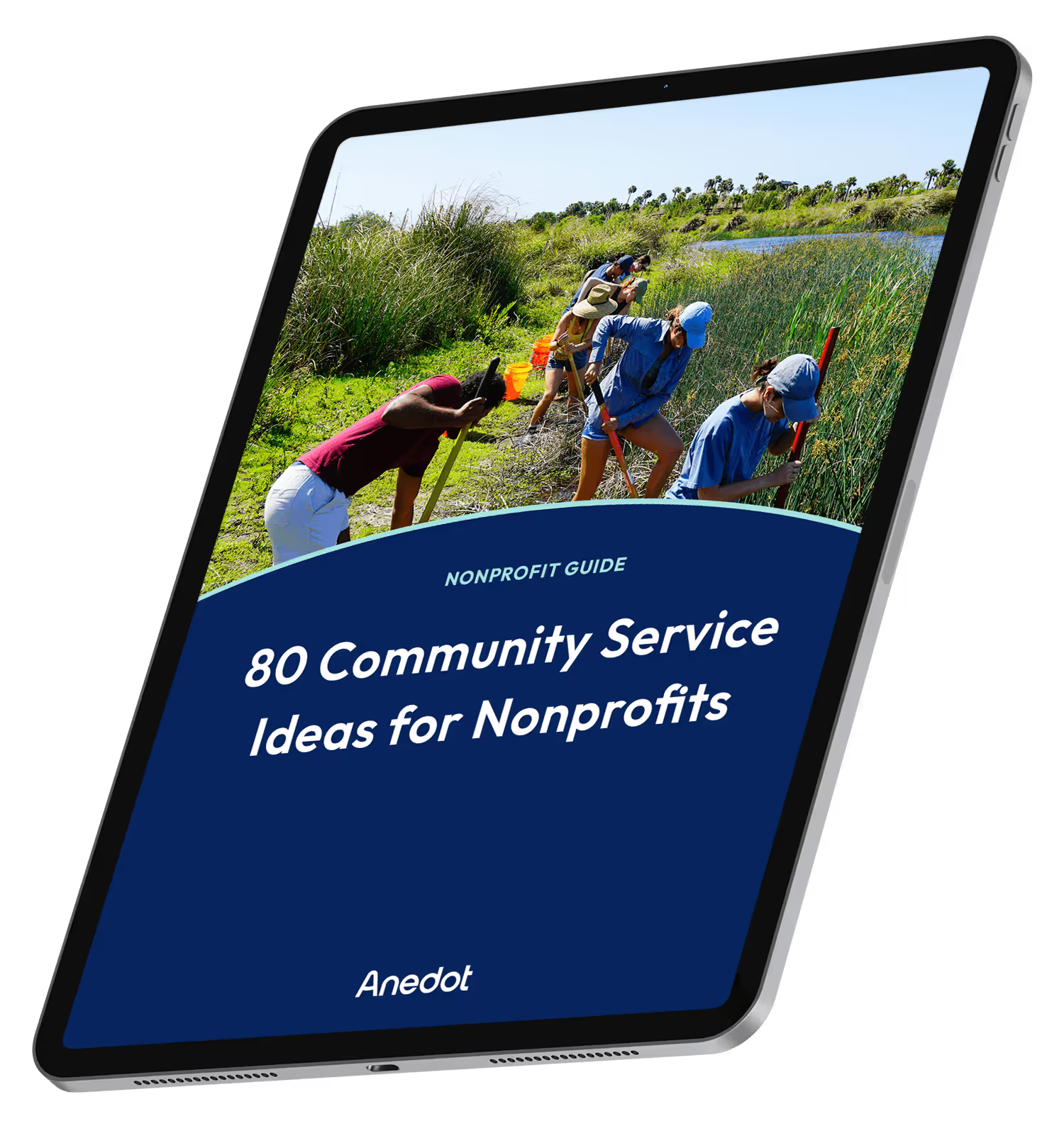
80 Community Service Ideas for Nonprofits
